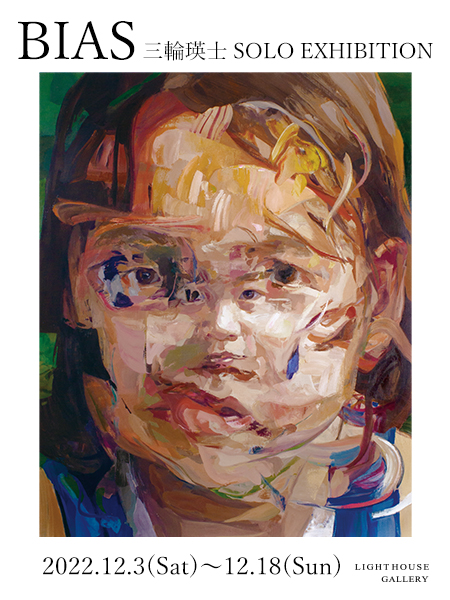
■ステイトメント■
私たちが視覚によってある対象を見たとき、実際に見えている状態と「見た」として記憶される視覚像、
それを伝達するための画像という3つの情報の地点がある。
現代において誰もが持ち歩く端末内のカメラ機能が、この3地点の溝を最小限の時間、誤差、
そして"誤解"で埋める役割として働いている。
この誤解とはカメラにではなく視覚を有する私たちの認識にある。
私たちは写真のようにたった一点の立脚点や焦点によって対象を切り抜くことはほとんどなく、
また動画のような連続的で緩慢な視線移動も行わない。
しかし対象の構造を写し取るという意味での正確性とこれ以上にない手軽さの影響は強く、
「見えたままに表す」ことまでもがカメラの映し出す様相を基準としてしまった。
私はこのような状況への疑問から端を発し、視覚の情報処理過程とより適した描出を改めて見直しつつ、
見たものを見えたままに表すことを絵画によって研究している。
ここで重要なのは研究の適当な前提に比して、
その解が私たちの考えうる内容から遠く離れているかもしれないという可能性である。
When we see an object with vision, there are three points of information: the state of being seen,
the visual image stored as "seen", and the image used to transmit it.
The camera function in the terminal that everyone carries around these days is working to fill
this three-point gap with the minimum amount of time, error, and "misunderstanding".
This misunderstanding is not in the camera, but in our perception with vision.
We rarely cut out an object by a single point or focus as in a photograph, nor do we do continuous,
slow gaze movements like in a movie.
However, the influence of accuracy in the sense of capturing the structure of the object and ease of use is strong,
and even "expressing as you see" is based on the appearance of the camera.
Starting from the question of this situation,
I have been researching painting to present what I see as it is while reexamining
the processing process of vision and the more appropriate way of drawing.
What is important here is the possibility that, compared to the appropriate assumptions of the study,
the solution may be far from what we can think of.
当我们通过视觉看到某个对象时,有三点信息,即实际看到的状态、作为“看到”而被记忆的视觉图像以及用于传达的图像。
在现代,谁都有随身携带手机里的照相机功能,起到了用最小限度的时间、误差和“误解”来填补这三点的鸿沟的作用。
这种误解不在于照相机,而在于我们对视觉的认识。
我们几乎不会像照片那样根据一点立足点或焦点来剪切对象,也不会像动影像那样进行连续而缓慢的视线移动。
但是,在拍摄对象结构这一意义上,它的准确性和无与伦比的便利性影响深远,甚至连“所见即所得”都以照相机所反映的面貌为基准。
我从对这样的状况的开始产生疑问,重新审视视觉的信息处理过程和更适合的描绘方式,通过绘画来研究将看到的东西原原不动地表现出来的方法。
这里重要的是,与研究的适当前提相比,那个解释可能离我们能想到的内容很远。